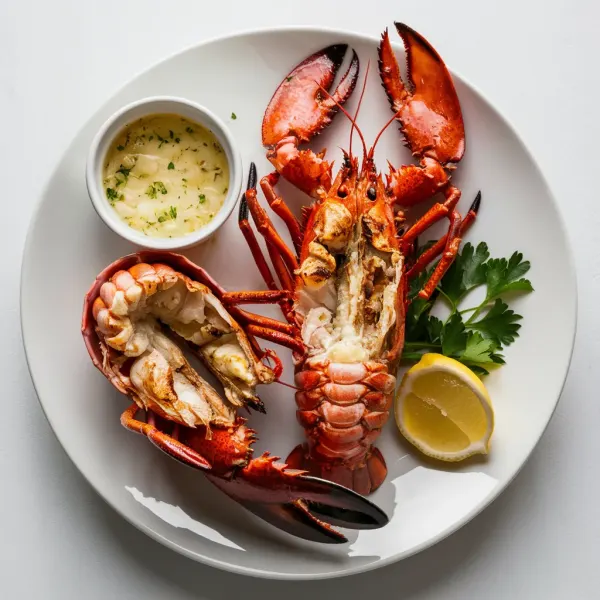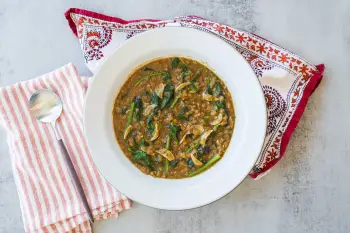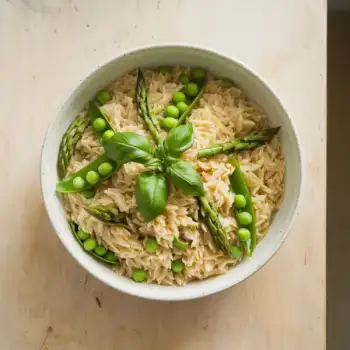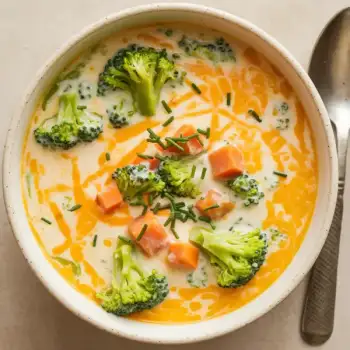
 9 minutes
9 minutesA delightful grilled lobster dish infused with rich herb butter, perfect for a quick yet luxurious meal.


Herb Butter
cups
Lobsters, about 1 to 1.5 pounds each
each
to taste
to serve
1. Boil Lobsters
Bring a large pot of heavily salted water to a rolling boil. The water should taste as salty as seawater. Once boiling, carefully drop in the lobsters and let them boil for just one minute.
2. Cool Lobsters
Immediately transfer the lobsters to a bowl of cold water to stop the cooking process. This prevents overcooking, ensuring the lobster meat remains tender and juicy.
3. Prepare Lobsters
When the lobsters are cool to the touch, crack the claws using the blunt back of a heavy knife. Split the tail meat open with a knife, leaving the top shell intact. Remove the sand sac and vein from the lobsters.
4. Stuff Lobster Tails
Stuff each lobster tail with two generous spoonfuls of herb butter, pressing the butter into the meat so it melts evenly during grilling.
5. Grill Lobsters
Prepare your grill by creating a medium-hot bed of coals. Place the lobsters on the grill and cook them for about four minutes on each side. The meat should turn opaque and develop a slight char.
6. Serve Lobsters
Serve the grilled lobsters with lemon wedges and any remaining herb butter. The acidity from the lemon will balance the rich, buttery flavors perfectly.
The herb butter is the heart of the flavor profile. If you typically use parsley and thyme, consider switching to tarragon for a hint of anise, or dill for a Scandinavian twist. A bit of mint could also add a fresh note, particularly good in summer.
Introduce different citrus zests into the butter mixture. Lemon is classic, but lime brings a tropical flair, and orange zest can offer a sweet, fragrant note.
Add a gentle heat with a pinch of cayenne pepper or a dash of smoked paprika in your herb butter. For a more exotic profile, a hint of garam masala or curry powder could be intriguing.
Swap out the lobster for shrimp and adjust the grilling time accordingly. For the butter, focus on garlic and lemon zest for a punchy, citrus flavor.
Roasted garlic can replace raw garlic for a more mellow and sweet flavor profile, or try using black garlic for a complex, umami-rich twist.




Comments (0)